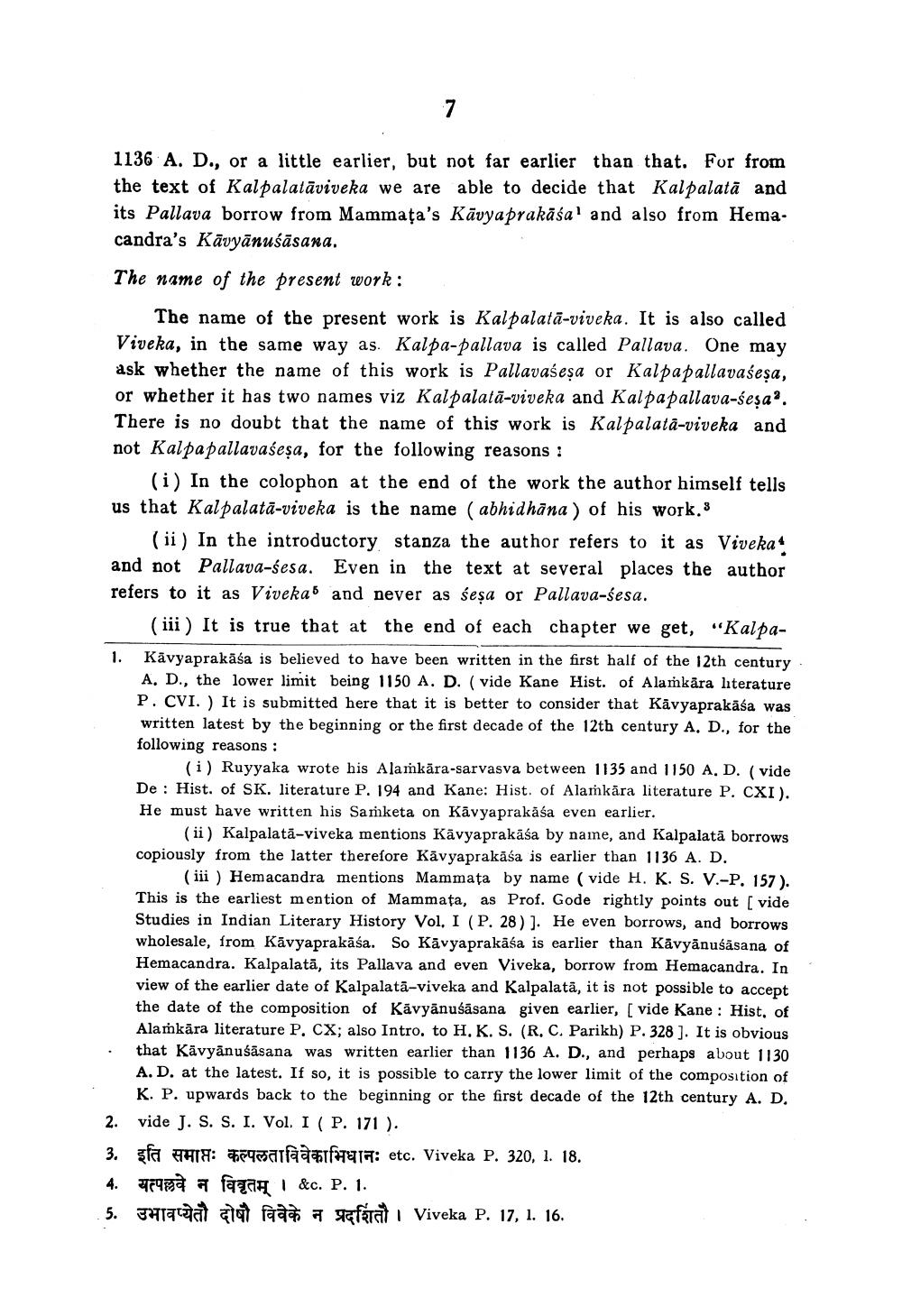________________ 7 1136 A. D., or a little earlier, but not far earlier than that. For from the text of Kalpalataviveka we are able to decide that Kalpalata and its Pallava borrow from Mammata's Kavyaprakasa' and also from Hema. candra's Kavyanusasana. The name of the present work: The name of the present work is Kalpalata-viveka. It is also called Viveka, in the same way as. Kalpa-pallava is called Pallava. One may ask whether the name of this work is Pallavasesa or Kalpapallavasesa, or whether it has two names viz Kalpalata-viveka and Kalpapallava-sesa?. There is no doubt that the name of this work is Kalpalata-viveka and not Kalpa pallavasesa, for the following reasons : (i) In the colophon at the end of the work the author himself tells us that Kalpalata-viveka is the name (abhidhana) of his work. 3 (ii) In the introductory stanza the author refers to it as Viveka and not Pallava-sesa. Even in the text at several places the author refers to it as Vivekas and never as sesa or Pallava-sesa. (iii) It is true that at the end of each chapter we get, "KalpaKavyaprakasa is believed to have been written in the first half of the 12th century A, D., the lower limit being 1150 A. D. (vide Kane Hist. of Alamkara literature P. CVI.) It is submitted here that it is better to consider that Kavyaprakasa was written latest by the beginning or the first decade of the 12th century A. D., for the following reasons: (i) Ruyyaka wrote his Alamkara-sarvasva between 1135 and 1150 A, D. (vide De : Hist. of SK. literature P. 194 and Kane: Hist. of Alamkara literature P. CXI). He must have written his Sarketa on Kavyaprakasa even earlier. (ii) Kalpalata-viveka mentions Kavyaprakasa by name, and Kalpalata borrows copiously from the latter therefore Kavyaprakasa is earlier than 1136 A. D. (iii) Hemacandra mentions Mammata by name (vide H. K. S. V.-P. 157). This is the earliest mention of Mammata, as Prof. Gode rightly points out (vide Studies in Indian Literary History Vol. I (P. 28)). He even borrows, and borrows wholesale, from Kavyaprakasa. So Kavyaprakasa is earlier than Kavyanusasana of Hemacandra. Kalpalata, its Pallava and even Viveka, borrow from Hemacandra. In view of the earlier date of Kalpalata-viveka and Kalpalata, it is not possible to accept the date of the composition of Kavyanusasana given earlier, ( vide Kane : Hist, of Alamkara literature P. CX; also Intro to H.K. S. (R. C. Parikh) P. 328 ). It is obvious that Kavyanusasana was written earlier than 1136 A. D., and perhaps about 1130 A.D. at the latest. If so, it is possible to carry the lower limit of the composition of K P. upwards back to the beginning or the first decade of the 12th century A. D. 2. vide J. S. S. I. Vol. I ( P. 171 ). 3. sfa : qmarfa afga: etc. Viveka P. 320, 1. 18. 4. 4999 a faci &c. P. 1. 5. Jurata ant raad 7 seferat | Viveka P. 17, 1. 16.




